Vedic scholar Dr. William Sands tells the story of TM Founder Maharishi Mahesh Yogi’s contributions to the most ancient tradition of knowledge, the Vedic tradition, and how his teaching profoundly impacted the world. This excerpt is adapted from Dr. Sands’ book, Maharishi Mahesh Yogi and His Gift to the World, available at miupress.org.
The most powerful way to understand Maharishi is to experience that entity about which he spoke—the pure intelligence deep within, the basis of individual life, and the source of all creative processes in nature. After all, you can listen endlessly to the description of a strawberry’s flavor, but you will never appreciate it properly without tasting it yourself.
In the coming years there will be books and documentary films that reveal the historical Maharishi. This book, however, will discuss Maharishi in the context of his historic revival of Vedic knowledge,i focusing on his teaching and his programs, in particular the Transcendental Meditation technique.
The Beginning of a Journey to Remove Suffering and Bring Peace to Others
Maharishi’s fifty-three-year quest to bring peace and prosperity to every individual in every part of the world began in 1955 with a faint, yet persistent, thought. At the time he was enjoying the silence of India’s Uttarkashi, the “Valley of the Saints” high in the Himalayas, where seekers of truth throughout the ages had come to unravel life’s mysteries. It was an ideal time for Maharishi, for as a recluse, he could pass his days in the region’s peaceful forests and caves, exploring his inner self without interruption or distraction.

Maharishi left his quiet life in the Himalayas to share his knowledge of the Vedic Tradition
Yet despite this idyllic life, Maharishi was surprised to feel a quiet yet recurring impulse to visit Rameshwaram, a well-known temple far off in the south. By his own account such a thought was unusual, for the recluses of Uttarkashi were not given to even think about the outside world, much less to visit it.
After some consideration, Maharishi resolved to visit the temple then quickly return to Uttarkashi. But, as he later related, in the course of his journey, he became increasingly aware of the suffering around him and the disparity between the quality of peoples’ lives and the ideals presented in the traditional Vedic literature.ii
Maharishi became increasingly aware of the suffering around him and the disparity between the quality of peoples’ lives and the ideals presented in the traditional Vedic literature.
In his words, there was “a gap between what life is declared to be and what it is found to be,”1 yet from his own experience he knew that it is simple to live a life without suffering.
Maharishi concluded that he would delay his return for a short time to “bring the blessings of the Himalayas to the people”2 by teaching them how to go deep within and unfold real, lasting happiness and peace.
And so began Maharishi’s journey to remove suffering and offer peace and fulfillment to anyone who wanted it, which took him from his secluded life in Uttarkashi for the remainder of his years on earth.
Maharishi Comes to the West
After a few years traveling and teaching in Asia, Maharishi decided to go to the West, where he felt that people were accustomed to accepting new ideas. He began with the United States, where his initial task was to explain concepts that often seemed, to the Western mind at least, impossibly abstract.
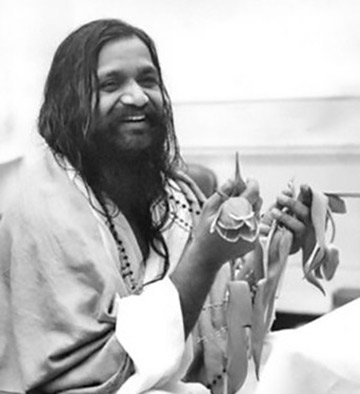
Maharishi came to the West to teach the Transcendental Meditation technique
The United States was enjoying a time of economic prosperity, with consumerism emerging as a major social force, and a socially conservative population that aspired to a successful career, stable family, and material comfort.
Meditation, on the other hand, was considered unusual, only practiced in far-away countries by recluses and mystics. People who meditated or practiced Yoga in the West were considered strange or eccentric. While the system of meditation that Maharishi taught doesn’t involve dogma or change in one’s belief system, it was a curiosity in post–World War II American society.
Nevertheless, the Transcendental Meditation technique was simple, effortless, and brought profound results, and after just a few years, Maharishi began to receive international acclaim and attention.
The Transcendental Meditation technique was simple, effortless, and brought profound results, and after just a few years, Maharishi began to receive international acclaim and attention.
Being, the Unmanifest Basis of Life
Even though Maharishi was teaching a simple and practical meditation technique, he often began his lectures with a theoretical overview of its principles. This included the description of a fundamental level of life lying beyond the material world, an abstract, non-material field of pure existence.
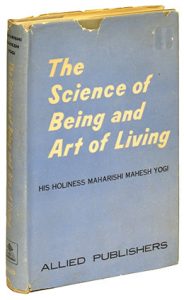
He described it as the most elementary constituent of matter, underlying creation—an infinite, unchanging ocean of wakefulness, pure consciousness, the very essence of life itself.
Maharishi termed this field “Being,” and described how it is “transcendental”—existing outside the realm of the phenomenal world. The following excerpt from his first book, Science of Being and Art of Living, elegantly describes this most basic field of life:
“As the omnipresent, essential constituent of creation, Being lies at the basis of everything, beyond all relative existence, beyond all forms and phenomena. Because it has its pure and full status in the Transcendent, it lies out of the realm of time, space and causation, and out of the boundaries of the ever-changing phenomenal field of creation…3
“Being is like a limitless ocean of life, silent and ever-existing in the same status. The different aspects of creation can be taken to be as ripples and waves of the vast ocean of eternal Being. All the forms and phenomena and ever-changing states of life in the world have their basis in that eternal life of omnipresent Being.”4
“Being is like a limitless ocean of life, silent and ever-existing in the same status.” —Maharishi
Two Approaches to Uncovering the Ultimate Reality of Life—Modern Physics and Ancient Vedic Knowledge
Maharishi’s vision of life’s ultimate reality was timely, as physicists had been working on a theory to describe a single, unified source of all force and matter fields.
At the end of the nineteenth century, scientists still assumed that matter could be reduced to a set of building blocks, such as molecules or atoms. With the advent of quantum mechanics in the 1920s, however, they began exploring more basic levels of matter, finding increasing unification at more fundamental levels.
Albert Einstein was the first to use the term “Unified Field Theory” to describe a theory that would unify the fundamental force and matter fields and provide a description for a unified source of all matter. Since his time, science has progressed to the point where physicists are able to construct theoretical descriptions of a unified source of the four fundamental forces in nature—electro-magnetism, weak interaction, strong interaction, and gravity.
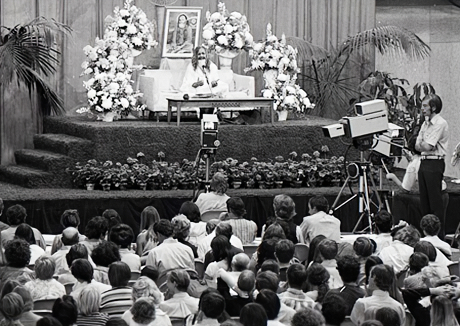
Maharishi giving a lecture at the University of Massachusetts, Amherst, July 1971
These theories describe a unified foundation for all matter and force fields, and in turn, for all of the particles comprising the basis of the universe, essentially providing a description of the foundation of all the laws of nature as a unified source of order and intelligence.
These two approaches—Maharishi’s Vedic approach and the objective approach of modern science—represent different ways of considering the ultimate reality of our material universe.
Dr. John Hagelin, a highly-regarded quantum field theorist and the president of Maharishi University of Management, has written on the many parallels between Maharishi’s description of the nature and properties of Being and quantum field theory descriptions of nature’s functioning. These similarities have led him, along with a growing number of scientists, to conclude that the unified field of modern science and the field of Being, or pure consciousness, are one and the same.5
Maharishi’s vision of life’s ultimate reality was timely, as physicists had been working on a theory to describe a single, unified source of all force and matter fields.
The Practical Benefits of Experiencing Being
Even though Maharishi might begin his lectures by speaking on the abstract topic of Being, he was preparing his audience for a practical outcome, for he was always pragmatic. Philosophical discussions on the nature of life were only useful if attached to practical outcomes that could improve an individual’s or society’s quality of life.
The applied value of Maharishi’s discussion lies in the relationship of Being to each of us. In his writing and speaking, Maharishi often described Being as an infinite reservoir of creativity, energy, and intelligence lying at the source of thought, the total value of human potential.

“Being is like a limitless ocean of life, silent and ever-existing in the same status.” —Maharishi
A variation of Maharishi’s ocean and wave analogy may help make this abstract concept more concrete. A single wave, unaware of the vast ocean beneath, might think, “I am a wave, separate from all others.” But if it could look below it would notice that its basis is the unbounded ocean, stretching silently in every direction.
In the same way, Maharishi explains, we are all expressions of a common, unified field of Being, which is the source of our creativity and intelligence. And even if one is unaware of it and of its significance to our lives, it is the source of our unlimited potential.
Since Being—or pure consciousness as Maharishi later referred to it—is the source of our own thought, we can directly experience it. We can access it, and we can make use of it to enjoy a myriad of benefits. And through its repeated experience, we can unfold it fully in our awareness.
The method for experiencing pure consciousness is the Transcendental Meditation technique, which Maharishi brought to light from the ancient Vedic Tradition.6
We are all expressions of a common, unified field of Being, which is the source of our creativity and intelligence. And even if one is unaware of it and of its significance to our lives, it is the source of our unlimited potential.
How Does the Transcendental Meditation Technique Work?
Maharishi often described the mechanics of Transcendental Meditation practice by comparing the mind to a lake, both of which have an active surface with silent depths beneath.

Maharishi often used a bubble diagram to explain how the mind transcends
A bubble becomes increasingly large as it rises from the lake’s floor, ultimately emerging on the surface, where it is visible. In the same way, a thought begins from the deepest level of consciousness and becomes increasingly concrete as it develops, eventually “emerging” on the surface of the mind.
During Transcendental Meditation practice, one takes a specific thought, a mantra, on the surface of the mind and then experiences quieter levels of that thought, eventually going beyond the finest impulse of thought to experience its source, transcendental Being, or pure consciousness.
This process is completely spontaneous and requires no effort because it takes advantage of the mind’s most fundamental tendency—to always go in the direction of greater charm, greater happiness. This tendency is basic to human nature in that we are constantly seeking more: we want more happiness, more success, more peace of mind, or just something more fascinating to do.
For example, if you are sitting in a room on a beautiful spring day, working on something uninteresting—perhaps a boring school project or a tedious tax return—and you begin to hear the strains of your favorite song, what happens to your attention? It is naturally drawn to the song and away from the task at hand. The shift of focus is automatic: you don’t decide to move the awareness from your tax return to the song. Rather, the mind spontaneously goes to whatever is more interesting.
This process [transcending] is completely spontaneous and requires no effort because it takes advantage of the mind’s most fundamental tendency—to always go in the direction of greater charm, greater happiness.
The Mind Is Spontaneously Drawn to Inner Silence
Maharishi describes Being, or pure consciousness, not only as a reservoir of infinite creativity and intelligence, but also as a state of bliss consciousness, of complete fulfillment. Accordingly, given the opportunity, the mind will automatically want to experience it.
The Transcendental Meditation technique simply gives the mind the opportunity to go inwards. Then the mind’s own nature allows it to be spontaneously drawn towards the experience of complete fulfillment in pure consciousness.
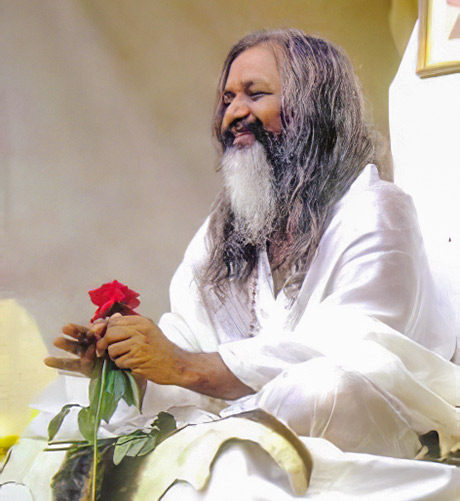
Maharishi describes Being as a state of bliss consciousness
In a sense, the Transcendental Meditation technique is like diving: falling into the water below simply requires that one lean forward, and then gravity does the rest. In TM practice, we establish an initial condition, and then the inherent peace and bliss of pure consciousness spontaneously draws our awareness within.
This is the reason that a ten-year-old can practice the TM technique as well as an adult, even if she doesn’t understand the principles. The process is completely automatic.
“But,” you might object, “if it’s more charming to go inwards, why isn’t the mind always headed in that direction, minute after minute, day after day?”
The mind is naturally directed outward through the senses so that we can function in the world. The nature of life is to grow and progress, but to do so we must act, we must achieve, we must accomplish.
That doesn’t mean foregoing the bliss deep within. It simply means that we need to take a few minutes each day to go inside and bring the awareness to pure consciousness, and then bring it out with us, a little each time, so that we can enjoy life more and more.
In the coming chapters we’ll discuss how we can systematically culture the mind to maintain pure consciousness even while we are active, culminating in the unfoldment of the total potential of human life, higher states of consciousness.
The Transcendental Meditation technique is like diving… we establish an initial condition, and then the inherent peace and bliss of pure consciousness spontaneously draws our awareness within.
The Loss and Revival of the Knowledge of Transcending
In the preface to his commentary on the Bhagavad-Gita, first published in 1967, 7 Maharishi wrote about the loss and revival of the most profound knowledge of life. His theme was simple: Vedic wisdom is by nature eternal and can never be lost, but from time to time, its proper understanding, and in particular the experience of Being, becomes largely unavailable and lost to view.
It was in this context that Maharishi saw his own international organization and his fifty-three-year endeavor to bring enlightenment to the world.
In March of 2006, a member of the British press asked Maharishi about the future of his organization, particularly after he passed on. Maharishi answered:
“Transcendental Meditation is not my creation. Transcendental Meditation has been throughout the ages, since time immemorial . . . People forget about it, someone comes to say it is there with you, he passes away, but this passing away is not of any importance. We do not give importance to the individual. We give importance to the transcendental reality, which transcends the individual and establishes universal, eternal oneness of Being.”8
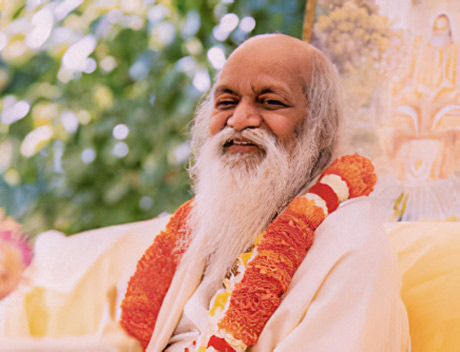
“We give importance to the transcendental reality, which transcends the individual and establishes universal, eternal oneness of Being.” —Maharishi
On January 11, 2008, just a few weeks before he passed away, Maharishi retired from active participation in his organizations. At that point he felt that his work was done. And so he reflected upon the conclusion of his life’s work, as always giving full credit to his teacher, Brahmananda Saraswati, whom he referred to as Guru Dev:
“Now today, I am closing my designed duty to Guru Dev. And I can only say, ‘Live long the world in peace, happiness, prosperity, and freedom from suffering.'”
“Live long the world in peace, happiness, prosperity, and freedom from suffering.” —Maharishi
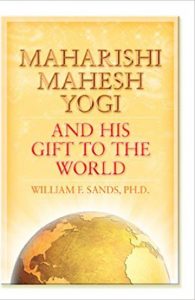
William F. Sands is the Dean of the College of Maharishi Vedic Science at Maharishi University of Management, where he is also associate professor of Sanskrit and Maharishi Vedic ScienceSM. He completed his undergraduate studies at Georgetown University, and received an M.A. and Ph.D. from Maharishi University of Management. He has worked in various capacities in Maharishi’s worldwide organizations for almost 40 years, including 12 years with Maharishi at his international headquarters in the Netherlands.
Order Maharishi Mahesh Yogi and His Gift to the World here ►
Notes
i. Vedic comes from the Sanskrit word Veda, which means knowledge, particularly knowledge of the underlying field of intelligence at the basis of creation. Vedic knowledge refers to a traditional literature that discusses this intelligence and how it can be unfolded in individual and collective life.
ii. Dr. Sands discusses the Vedic literature in depth in Chapters 8 and 9 of his book.


I have been practicing TM for only 4 weeks. Thank you for providing such clarity of “what it’s all about” .
So simple, so pure , but can not be seen with eyes looking out , love it.
“Jai Guru Dev”
This article is a lovely account of what will in time be unfolded to all…the destiny of an amazing saint, Maharishi Mahesh Yogi. Beautifully guided and designed by Guru Dev, Maharishi embarked on the amazing journey of teaching a technique that would shower the world with inner happiness and bring peace to all mankind. Your account, Dr. Sands, is clear and flowing and complete.
Beautiful
Dr. Sands’ writing is always so clear and simple. This really lets the depth and scope of what Maharishi has provided shine through. So fortunate that I got to learn TM as a college student in 1973. What a privilege that I am able to teach this technique and offer this knowledge.